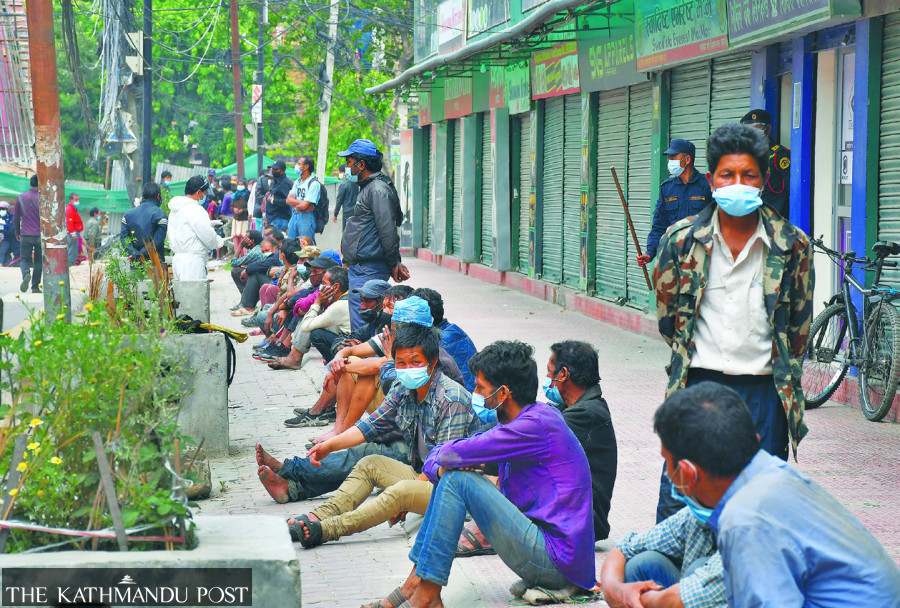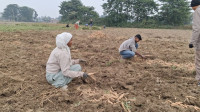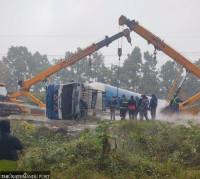National
Around 27 percent Nepalis indebted due to Covid-19 pandemic: UNICEF report
Twelve percent population reports selling assets, seven percent reduced food for children. Six percent lost their jobs, according to the study.
Arjun Poudel
Hundreds of thousands of people were infected with Covid-19, thousands died and were hospitalised during the pandemic that started in Nepal in March 2020. But effects of pandemic were not only limited to infections, deaths and hospitalisations.
Around 27 percent of the population throughout the country were indebted in the last two years of Covid-19 pandemic, according to a new report by the United Nations Children’s Fund.
According to the findings of the study ‘Child and Family Tracker’, which was carried out on various dates from May 2020 to April 2022 in all seven provinces throughout the country, 12 percent of the population sold assets to cope up with the financial problems during the pandemic.
“Six percent of the population on an average throughout the country lost jobs during the pandemic,” reads the report. “Seven percent of the population reported reducing dietary intake.”
Majority of those who lost jobs during the pandemic were from Sudurpaschim Province (around 10 percent) followed by Karnali province (around seven percent).
Financial assistance, food, employment and child education were major needs of the respondents.
“Respondents reporting job losses are twice as likely to be struggling for food,” states the report. “Struggle for food is linked to lack of money and rising prices.”
Respondents from lower-income group are much more likely to report reduced dietary intake for children (11 percent), according to the report.
Nepal saw three waves of the pandemic, with the second being the most devastating during which many people lost their lives while thousands struggled for hospital beds and oxygen.
The country imposed the first lockdown from March 24 to July 21, making it difficult for people from the low-income group to survive. During the second wave, which was driven by the Delta variant of SARS-CoV-2, around 8,000 people died of coronavirus infection.
Again from April 29, 2021, the authorities had imposed a lockdown that lasted for months.
Nepal managed to start vaccinating its population from the fourth week of January 2021. Though the third wave infected a lot of people, it was not that fatal, arguably because the vaccination was in a full swing.
A total of 11,952 people died of Covid-19 across the country.
The number of new cases has drastically come down lately, with the number of active cases currently standing at 93.
The UNICEF study shows that respondents reporting job losses were significantly more likely to report reduced dietary intake (19 percent). Thirteen percent respondents reported they were struggling for food and reduced dietary intake. Twenty percent respondents in Karnali reported reducing dietary intakes during the study.
Likewise, residents from Sudurpaschim are twice as likely to be struggling for food daily. The lowest income group is more than nine times likely to struggle for food compared to the top income group, according to the study.
Meanwhile, domestic violence, verbal abuse, intimidation, threatening, being beaten, physical and sexual abuse, menstrual isolation were the main forms of violence against women during the pandemic.
Child marriage, child labour, physical and sexual abuse were top forms of violence noticed regarding girls. Girls were also reportedly threatened and abandoned, says the report.
Child labour, physical violence, yelling and child marriage were
the top forms of violence noticed regarding boys during the pandemic.
Of the respondents who reported their children were affected by the pandemic, an overwhelming majority reported increased aggression (74 percent); some reported changes in dietary habits (30 percent), crying more, feeling withdrawn and worried about family being sick.
The study was carried out among 32,433 people from 5,825 households which covered 80 percent of municipalities.
Among the respondents, 16.3 percent were from Province 1, followed by 20.4 percent from Madhes, 21.5 percent from Bagmati, 8.6 percent from Gandaki, 16.6 percent from Lumbini, over 6 percent from Karnali and 10.4 from Sudurpaschim.




 9.12°C Kathmandu
9.12°C Kathmandu













%20(1).jpg&w=300&height=200)

